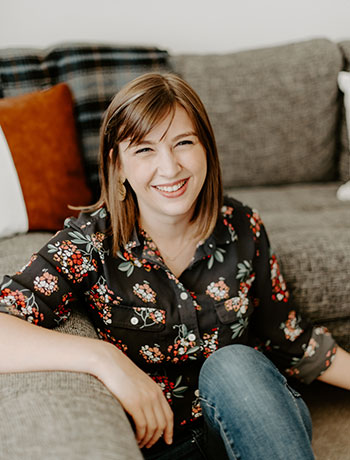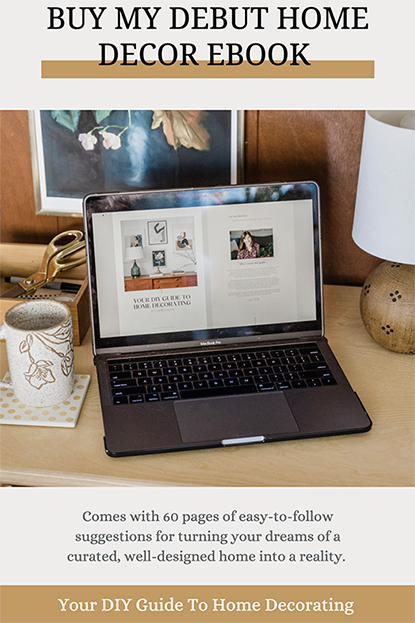.jpg)
One of the more frequent requests I get over on Instagram when I open up the floor for blog post ideas is a quick rundown of interior photography tips. I am, by no means, a professional photographer, and I just learned as I went over the past eight years of documenting our home for Dream Green DIY. That said, I’m more than willing to share all of those tricks I’ve picked up along the way.
If you’re interested in a deeper dive, I would suggest investing in an online course that will give you more in-depth instructions for taking better photos. It took me at least a year to feel confortable enough to shoot in manual mode on my camera, but I haven’t looked back since I made the switch. I feel like shooting in manual mode gives you so much more control over your photography, and opens the door to tons of creativity, too.
However, I don’t really feel comfortable enough to teach you how to actually go manual. The good news is that these tips I share below (specifically for shooting in low light interior spaces) could be the perfect stepping stone to take you into manual mode on your camera.
.jpg)
.jpg)
.jpg)
Choose Your Time Wisely
I think it’s pretty safe to assume that you’ve heard shooting interior spaces with natural light is your best bet for a crisp, clean, bright image. So, with that in mind, choose your photoshoot time wisely. Get to know the times of day when it’s best to shoot a certain room.
For example, I know that I have to shoot any master bedroom photos between 8:00am and 10:00am because that’s when the sun shines through the side windows of our house. Conversely, the office and guest room, both on the opposite side of our home, get the best light after 6:00pm.
No matter where a room is in your house, there’s always a “best” time to shoot it based on the natural light it gets (with the exception of window-less spaces, of course). Observe the rooms in your house over the course of a week and make note of the optimal times to shoot them so you can get the brightest images possible.
.jpg)
.jpg)
Turn The Lights On
For those rooms that don’t have any natural light to speak of (ex. a window-less bathroom or laundry room), you’ll have to make do with overhead artificial lighting. I used to think these types of spaces just weren’t photograph-able because of the lack of natural light, but I’ve learned over the years that artificial lighting can work to your advantage if you know how to edit the photos in post-production.
Our bathrooms are the number one culprit in this category. Neither one has a window, so I have to rely entirely on overhead fixtures. I shoot the space with all the lights on to ensure as much even lighting as possible (although you won’t be able to avoid shadows entirely, unfortunately), and then I tweak the photos in Lightroom after the fact.
I think the biggest thing to be prepared for when shooting low light spaces using artificial light bulbs is an overall “off” color tone. It depends on the temperature of your bulbs, but your photos will probably look really oversaturated and unnaturally orange. To fix this, I actually use the auto white balance setting in Lightroom. With one click, I can often get rid of all the orange glow from the photo, but it does sometimes overcompensate by turning the photo very blue.
After auto-balancing the color, I can make tiny tweaks to the image (adding back some warm tones, increasing the purple to desaturate it a little more) until it looks soft and inviting. All this to say that overhead lighting really can be your pal!
.jpg)
.jpg)
Use A Tripod
Now, let’s say you have a space that has natural light to speak of, but not very much of it. These types of spaces are perfect for a tripod since you can slow the shutter speed way, way down in order to allow the maximum amount of light to get into your camera. I know I’ve just officially gone into “Manual Mode” language, so feel free to rely on those first two tips mentioned above until you’ve had time to take a course!
For those of you who already use this mode and feel comfortable manipulating the shutter speed on your camera, I couldn’t recommend a tripod more. There’s just no way you could hold a camera steady enough on your own. I also feel like a camera remote is a necessary investment since any movement on the camera at all when using a slow shutter speed (like your finger pressing the trigger) could result in a blurry photo.
Here’s how to do it. Set your camera on the tripod, situate it in a place to capture the spot you want, set your camera on a 2-second delay timer controlled by your remote, step back, and press the button on your remote to engage the timer. Don’t move or even breathe until that shutter closes back up! I’ve literally taken a step too soon toward the camera before the shutter was closed, and gotten a blurry photo because my feet made the floor (and camera) shake just a little bit. It’s that sensitive.
Ultimately, a tripod is the ideal way to maximize small doses of natural light when photographing a space.
.jpg)
.jpg)
Bump Up The ISO On Your Camera
Again, this trick will have you branching out into manual mode on your camera, but it’s the method I use most often these days to combat photography in a dark space. If you bump up the ISO on your camera, you’ll be able to increase the sensitivity of the image sensor so you can get brighter images, even in low light interior spaces.
The only caveat is that you’ll decrease the quality of your final image. You’ll end up with a slightly grainy photograph. Some photographers do this on purpose to achieve a bit of a vintage effect on their images, and I personally love the look, too! It’s just something to keep in mind when you start manipulating the ISO on your camera.
.jpg)
This is a topic that I could clearly go on and on about, and I was so excited to find out that it interested you guys, too. Photography is never something I thought I’d have the opportunity to get into, but this job opened the door for an ultra deep dive down into the craft. I consider it a lucky perk since it’s now one of my favorite things to do on a weekly basis.
Feel free to leave any lingering questions below, and if you have an online or in-person photography class to recommend, do tell in the comments!
.jpg)
*I earn a small percentage from purchases made using the affiliate links above. Affiliate links are not sponsored. Rest assured that I never recommend products we wouldn’t use or don’t already love ourselves.




